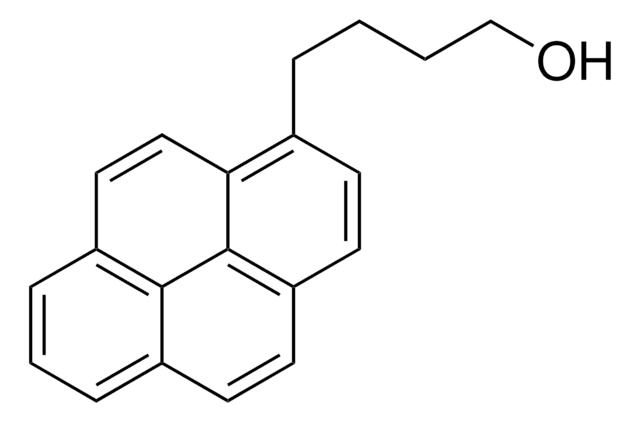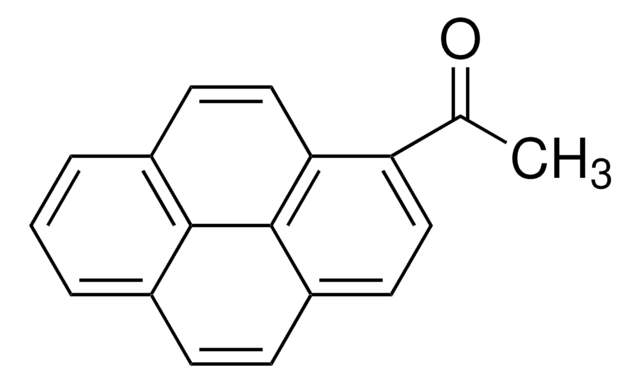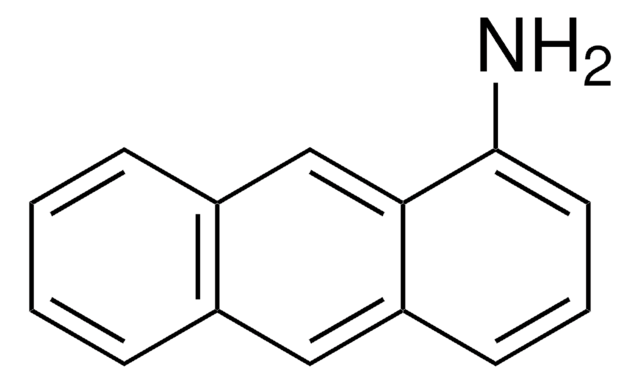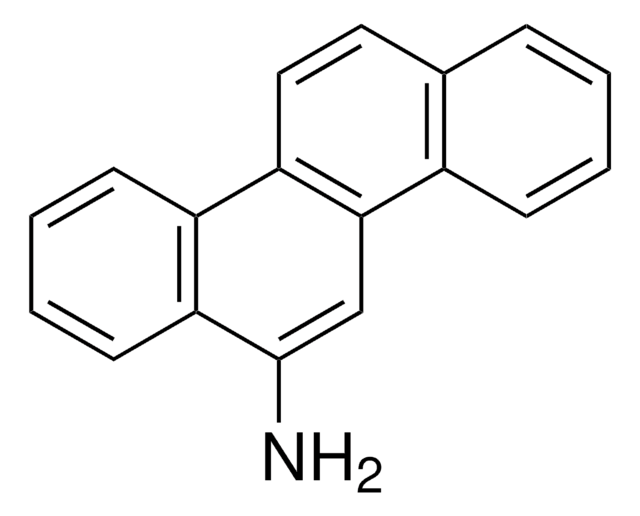401633
1-Pyrenmethylamin -hydrochlorid
95%
Synonym(e):
PMA
About This Item
Empfohlene Produkte
Assay
95%
Form
powder
mp (Schmelzpunkt)
258 °C (dec.) (lit.)
SMILES String
Cl[H].NCc1ccc2ccc3cccc4ccc1c2c34
InChI
1S/C17H13N.ClH/c18-10-14-7-6-13-5-4-11-2-1-3-12-8-9-15(14)17(13)16(11)12;/h1-9H,10,18H2;1H
InChIKey
RGNMXKKNDSHTFD-UHFFFAOYSA-N
Verwandte Kategorien
Allgemeine Beschreibung
Anwendung
- Pyrenyl hyaluronan (Py-HA), a pyrenyl-based polymer that can be used for the development of pH-triggered drug carriers.
- An electrochemical electrode of reduced graphene oxide bound with pyrene functionalized folic acid derivative.
It can also be used for the synthesis of 4,6-dichloro-2-pyrenemethylamine-1,3,5-triazine, a precursor to synthesize a star shaped polymer 4,6-bis(9H-carbazol-2-yloxy)-2-(pyrenemethylamine)-1,3,5 triazine (TPC).
- pyren-1-ylmethyl-[2-(6-{2-[(pyren-1-ylmethylimino)-methyl]-phenoxymethyl}-pyridin-2-ylmethoxy)-benzylidene]-amine
- 2(pyren-1-ylmethyl-{2-[6-(2-{[(pyren-1-ylmethyl)-amino]-methyl}- phenoxymethyl)-pyridin-2-ylmethoxy])-benzyl}-amine
Signalwort
Warning
H-Sätze
Gefahreneinstufungen
Eye Irrit. 2 - Skin Irrit. 2 - STOT SE 3
Zielorgane
Respiratory system
Lagerklassenschlüssel
11 - Combustible Solids
WGK
WGK 3
Persönliche Schutzausrüstung
dust mask type N95 (US), Eyeshields, Gloves
Analysenzertifikate (COA)
Suchen Sie nach Analysenzertifikate (COA), indem Sie die Lot-/Chargennummer des Produkts eingeben. Lot- und Chargennummern sind auf dem Produktetikett hinter den Wörtern ‘Lot’ oder ‘Batch’ (Lot oder Charge) zu finden.
Besitzen Sie dieses Produkt bereits?
In der Dokumentenbibliothek finden Sie die Dokumentation zu den Produkten, die Sie kürzlich erworben haben.
Kunden haben sich ebenfalls angesehen
Unser Team von Wissenschaftlern verfügt über Erfahrung in allen Forschungsbereichen einschließlich Life Science, Materialwissenschaften, chemischer Synthese, Chromatographie, Analytik und vielen mehr..
Setzen Sie sich mit dem technischen Dienst in Verbindung.
















